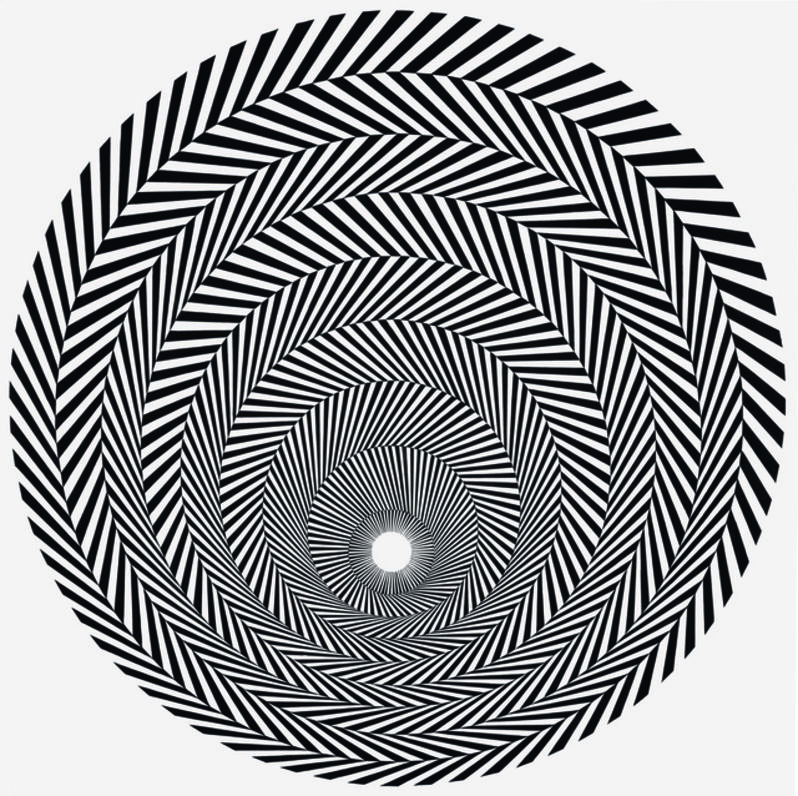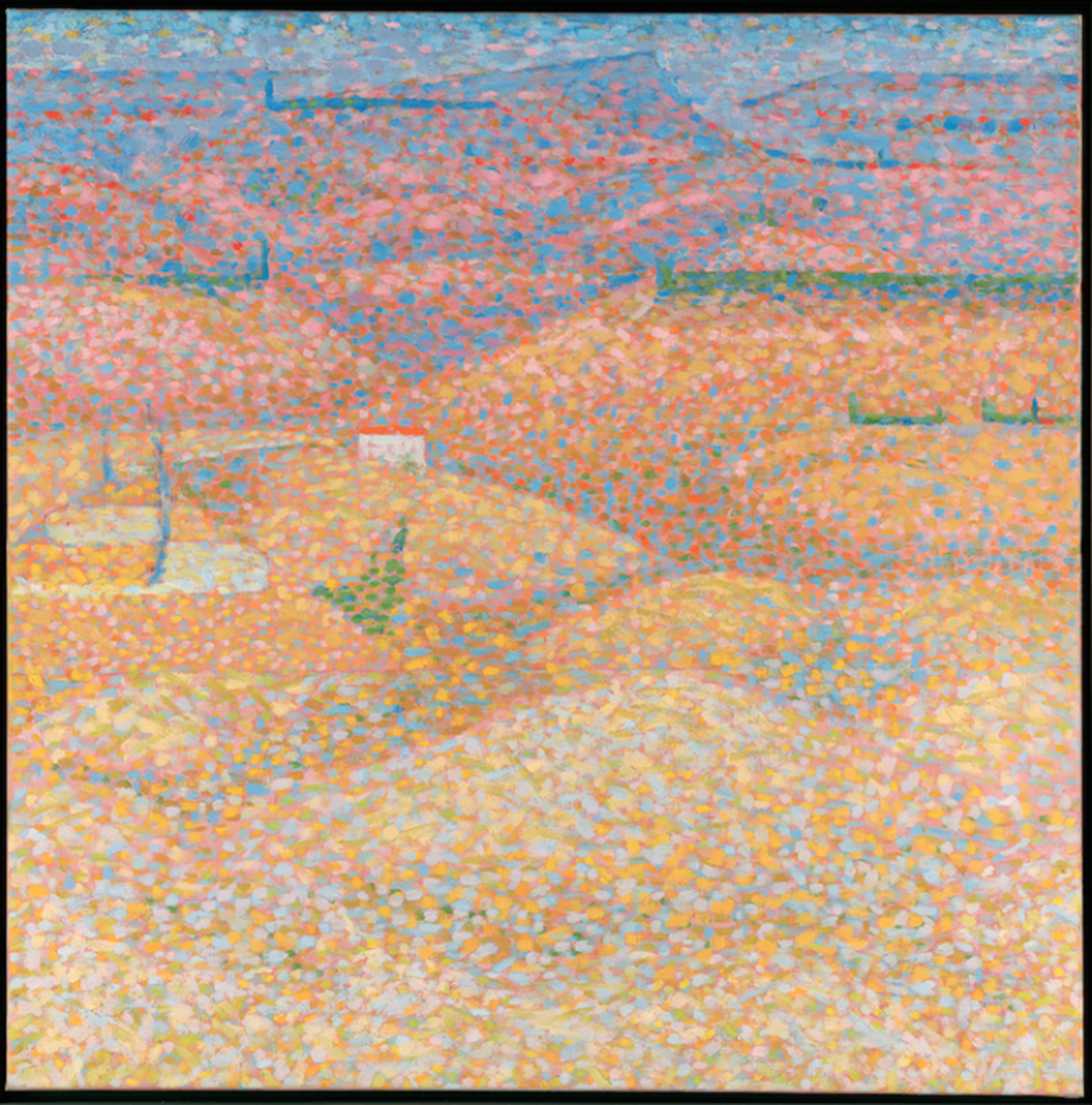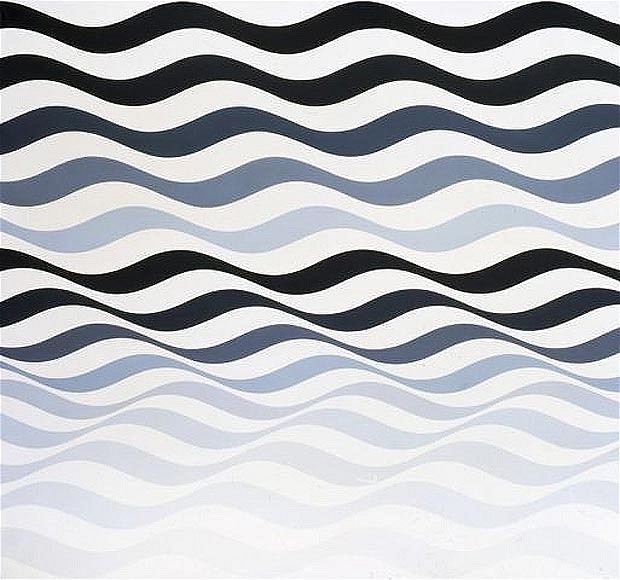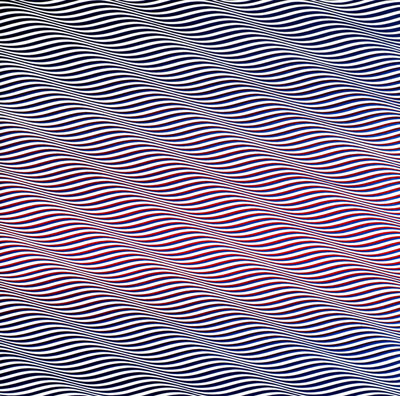Bridget Riley is our artist this month. She made major contributions to the Op Art movement in the 1960s. It’s a style that we all recognize, but what is it really?
What is Op Art?
Op Art is short for optical art. Considered an abstract style of art, it became popular in the 1960s. There’s no mistaking an Op Art piece – trippy patterns, geometric shapes, and contrasting colors were often used to influence the visual perception of the viewer. An Op Art design might appear to move, draw the gaze deep into the piece, or create the illusion of an object. Black and white patterns are perhaps the best known part of this style, but the manipulation of perception and the creation of illusion were central to Op Art.
Blaze 4. Bridget Riley. 1964.
Seen as the successor to geometric abstraction, “its stress on illusion and perception” suggest deeper influence from the old masters who practiced trompe l’oeil (fool the eye). However, artists across the centuries have expressed interest in visual trickery through many different styles and Op Art simply another way of doing so. Bridget Riley herself is an example of a classically trained artist that used her skill to stand at the forefront of an instantly recognizable art style.
Bridget Riley’s Early Life
Riley was born on April 24, 1931 in Norwood, London. She studied at Goldsmiths College and the Royal College of Art and began teaching in 1957.
Ever since childhood, she spent time looking at nature and the world around her. She had a natural talent for art that she demonstrated in her early work, comprised mainly of portraits and still lifes. She grew up in a time where “good” art was representational and so her creative studies began with a more classical training. This meant accurately representing life and copying works of the old masters.
Part of accurately depicting life is being able to create depth on a two-dimensional surface. Riley found this aspect very interesting well before she began her Op Art journey.
Her work eventually took on a somewhat Impressionist style, but in the late 1950s she began painting landscapes in the Pointillist style. Pointillism (painting lots of tiny dots to form an image), particularly the work of Georges Seurat, set Riley on the path to exploring the different ways she could use paint to play with perception. She not only studied it as its own form of optical illusion, but learned how to use color to create various optical effects.
Pink Landscape. Bridget Riley. 1960.
Style
Although Op Art is considered a form of Abstract art, Bridget Riley didn’t consider herself an abstract artist. First and foremost she considered herself a painter. Her goal is to include the viewer as a part of her work because it’s the audience that completes the work. There needs to be that interaction between the viewer and the piece in order for it to be considered art. She wants the audience feel like they are a part of the art – a direct attempt at breaking down the “elitist” impression of the art world and making art more accessible to everyone.
Because the focus is on the visual experience, the viewer is reminded that things are not always as they appear. Riley is “known for exploring optical experiences in her paintings.” She is inspired by her perception of the world she observed so intently throughout her life. All of these concepts are what support the geometric forms, high contrast, “dizzying optical illusions”, black and white shapes, and vibrant colors of her art.
Paintings
Riley painted her first Op Art piece in 1960. She began to play with geometric shapes and patterns, black and white lines, and other abstract forms. These are probably the most recognizable Op Art Pieces and what is most associated with the style.
Arrest 3. Bridget Riley. 1965.
During this time Riley grew to dislike the commercial side of art. There were no copyright protections for artists back then and she opposed the way many artists’ work (including her own) was stolen and exploited for profit. Ironically, she worked for an advertising agency in the early sixties. She gave this up along with teaching by 1964.
Riley started using color in 1967. Geometric forms were sometimes replaced by curved lines “which created a wavelike movement”. This was due in part for her disdain toward the commercial entities that stole her art. Her paintings held the same intensity, but with more nuanced treatment of “alternating color”.
Cataract 3. Bridget Riley. 1967.
Riley continued to paint through the decades, well into her 80s. You may even recognize one of her pieces from the 2012 Olympic Games poster.
Rose Rose. Bridget Riley. 2012.
Her use of color and form has varied over the years, but there is no mistaking a Bridget Riley painting.
Fold. Bridget Riley. 2004.
Have you checked the other Artists of the Month? There’s a project for each one too!
References
https://www.tate.org.uk/art/artists/bridget-riley-1845
https://www.artsy.net/artist/bridget-riley
https://www.theguardian.com/artanddesign/2021/dec/10/bridget-riley-at-90-a-master-who-can-leave-you-feeling-elated-liberated-and-even-seasick
https://www.thecollector.com/bridget-riley-op-art-optical-illusions/
https://www.theartstory.org/movement/op-art/



















